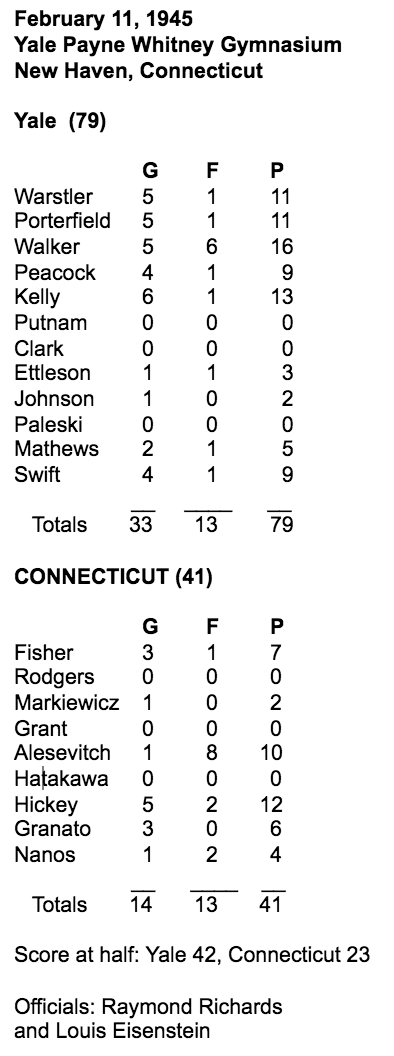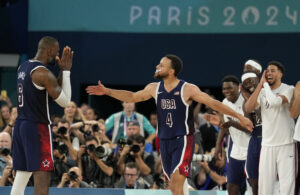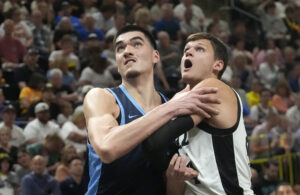- Attacking style not the only reason some Tottenham fans will back Ange Postecoglou until the bitter endPosted 5 months ago
- Paris Olympics takeaways: What did Team USA’s crunch-time lineup say about NBA’s hierarchy?Posted 10 months ago
- Zach Edey posted an easy double-double in Summer League debut. Here’s why he’ll succeed in NBAPosted 11 months ago
- What will we most remember these champion Boston Celtics for?Posted 12 months ago
- After long, seven-year road filled with excruciating losses, Celtics’ coast to NBA title felt ‘surreal’Posted 12 months ago
- South Florida men’s basketball is on an unbelievable heater– but also still on the bubblePosted 1 year ago
- Kobe Bufkin is balling out for Atlanta Hawks’ G League team. When will he be called up to NBA?Posted 1 year ago
- Former Knicks guards Immanuel Quickley, RJ Barrett may yet prove Raptors won the OG Anunoby tradePosted 1 year ago
- Rebounding savant Oscar Tshiebwe finally gets NBA chance he’s deserved for yearsPosted 2 years ago
- Is Tyrese Maxey vs. Tyrese Haliburton the next great NBA guard rivalry?Posted 2 years ago
Jay Swift, the first African-American to play a varsity sport at Yale, is remembered here during Black History Month
- Updated: February 13, 2018

While most followers of Yale sports history are under the impression that Levi Jackson was the first Black to compete in any sport for that college, it was Swift who predated the New Haven legend by a few years. (Photo courtesy: Yale University)
Jay Swift played three seasons on the Yale varsity basketball team. That, in itself, was not a remarkable accomplishment. It was significant, however, because he appears to have been the first African-American to suit up in a game uniform for what was always a primarily white, preppy institution for the privileged.
Swift was born in Manhattan, New York, on January 29, 1926, graduated from Townsend Harris High School, and was living in St. Albans, NY, at the time he entered Yale in the fall of 1944.
While most followers of Yale sports history are under the impression that Levi Jackson was the first Black to compete in any sport for that college, it was Swift who predated the New Haven legend by a few years. Although Jackson was the first to play football (and to be elected captain in 1949), and records are not kept by Yale in this area, Swift was likely the earliest to participate in any sport at that prestigious institution.
Yale, which was founded in 1701, had hardly any African-American students through the 1940s. Swift was the only one among the civilian undergraduates at the time he entered in the fall of 1944, just four or five were on the campus under the Navy V-12 program.

Though he didn’t receive much playing time, Swift was a member of one of Yale’s greatest teams ever. (Yale University Photo)
Many years later, in 2010, a former Master of Yale’s Pierson College wrote facetiously that “there are now more black cheerleaders at Yale than there were total blacks enrolled in the early 1940s.”
During World War II, Yale was in session full time. Swift, like others, obtained his degree in about two a half years. He graduated in March 1947, although his biography appears in the 1948 Classbook. It reveals that he was known on campus by the nickname of Swifty. He was an English major and a member of Timothy Dwight residential college.
A good athlete, Swift played intramural sports for Timothy Dwight. He was on its football team in 1945 and 1946 and on its crew as a junior.
But it was as a player on Yale varsity basketball teams that he achieved the distinction that is the subject of this article, written in observance of Black History Month.
1944-45
In the season of 1944-45 Swift, made his historic debut in a Yale uniform. He appeared in 14 games, scoring a total of 20 points on nine field goals and 2-out-of-3 fouls. It was nothing great, except for the fact that he actually was on the team and he was an African-American representing a great college.
On February 10, 1945, Swift had what would be his best game when, as reported in The New York Times, Yale “gained New England collegiate basketball honors, overwhelming the University of Connecticut five, 79-41, to set a scoring record for the Payne Whitney Gymnasium.”
Yes, 79 points was a record high in an era of only moderate scoring. The previous record for the gym was not even set in a college game. It was 73 points made by a Columbia Navy team the year before against a Yale Army Air Force combine
Swift set the record
In that Yale win over the “Uconns”—as they were then called—Swift was the player whose six consecutive points brought the team total to the record high of 79. In the final minutes he made three baskets after a teammate, Charley Johnson, tied the mark at 73. Swift scored nine points that night, as Yale concluded a 14-4 season.
In game programs this writer preserved from the season of 1945-46, Swift is listed on the roster as a guard, standing 6-0, weighing 180 pounds.
Paul Walker, a three-sport star who would go on to play pro football for the New York Giants, was then a senior and captain of the basketball team. He was joined on the court by freshman Tony Lavelli. Featuring a spectacular hook shot, Lavelli was arguably the greatest pure shooter Yale ever would have.
Another member of that squad, Bolt Elwell, also played football and baseball. Unlike Walker, but similar to Jay Swift, Elwell only got into games off the bench.
1946-47
In his final season playing for Yale, 1946-47, Swift’s game program height was increased from 6-0 to 6-1.
He played in only six games and went scoreless. He may have been injured. Or it was just too difficult to get much playing time on that team, one of Yale’s best ever.
Coach Red Rolfe, former New York Yankees star, who coached both baseball and basketball at Yale, favored keeping the starting five on the floor as long as possible, using only one or two substitutes in most games.
Run-in with prejudice
Being a student of color at lily white Yale in the 1940s was not easy. It is hard for us around New Haven today to accept the fact that Swift and three classmates were once asked by the manager of George and Harry’s, a popular eating and drinking spot on Wall Street, to leave the premises because blacks were not allowed there.
Graduation
During World War II Yale was in session full time. Swift, like others, obtained his degree in about two a half years. He graduated in March 1947, although his biography does not appear until the 1948 Classbook.
Post-graduate life
After obtaining his degree in March of 1947, Swift had a sometimes stormy career in public life for his native New York City. When he was commissioner of the Addiction Services Agency he was sharply criticized by the city controller, Abraham Beame, for alleged mismanagement.
Yet in 1974 Beame, who by then had become Mayor, named Swift as executive director of the Environmental Control Board. He explained that just because he had criticized Swift’s management before “there is no reason to feel that he cannot do a good job in another department.”
He held that position until he retired in 1983, after which he became a special consultant to the Queens (New York) District Attorney and to the Ad Hock Review Committee of the National Institute of Mental Health.
Epilogue
Jay James Swift was a member of the Yale varsity basketball team for three seasons, was awarded a coveted letter “Y” for each of his last two, and is believed to have been the first African-American athlete at Yale. He died of cancer at the age of 62.
He left a little known yet permanent place in Yale sports history.




